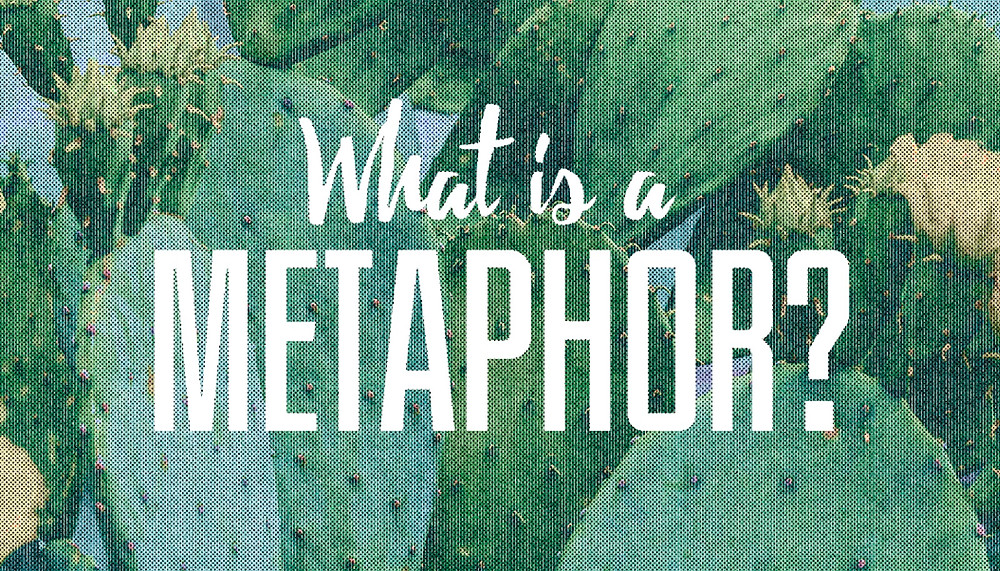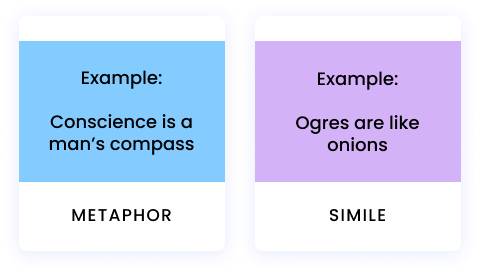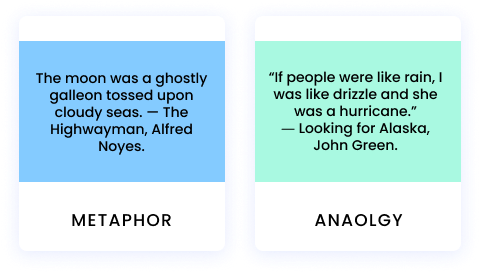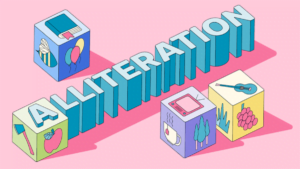A metaphor is a figure of speech that helps explain an idea or make a comparison by describing an object or action in a way that isn’t literally true. They pique your interest by drawing beautiful parallels between seemingly unrelated objects or ideas. Every day, we use metaphors hundreds of times, but what is a metaphor, how are they formed, and how does Metaphor differ from other figures of speech?
Let’s learn more about metaphor, the basics and some metaphor examples!
What is Metaphor?
A metaphor is a figure of speech that draws comparison between between two dissimilar concepts. Words or phrases that are normally associated with one type of item or concept are applied to something that is not normally associated with that terminology with metaphors.

Returning to formality, a metaphor never draws clear parallels. The similarity is subtle, and you’ll have to use your imagination to figure out how one thing compares to another. This means that a writer employs the literary device to keep you engaged in their work all while stimulating your mind.
They are a type of figurative language used to convey a meaning other than the literal denotative meaning of the words or phrases used. They’re used in poetry and novels, as well as other forms of writing, speeches, and everyday conversation.
Here are some examples of Metaphors to give you a clear picture:
- His words cut deeper than a knife. (Words do not become sharp objects. Someone has said something hurtful to another person in this metaphor.)
- Time is a thief. (This metaphor exemplifies how time seems to fly by and our lives seem to fly by).
- She’s going through a rollercoaster of emotions. (This metaphor simply means that the person is in a variety of moods).
Read this article on 10 Best Ways to Learn Creative Writing Online!
Purpose of Metaphors
Metaphors serve a variety of purposes:
- Aid people in visualizing new ideas.
- Meaningfully describe unfamiliar situations.
- give a person’s writing or conversations more variety and interest
- create memorable images
- combine the abstract and the concrete
- influence audience members and readers
Different Types of Metaphor
Metaphors are more complicated than they appear. Metaphors come in a variety of forms, each with its own set of characteristics. The following are some of the most commonly used ones:
Absolute metaphors
To make a point, these metaphors compare two things that have no obvious connection.
FOR EXAMPLE: “Samuel is doing a tightrope walk with his grades this semester.”
Implied metaphors
These metaphors compare two unrelated elements without mentioning one of them.
FOR EXAMPLE: “A woman barked a warning at her child.”
Mixed metaphors
A mix of two or more metaphors that results in a sometimes amusing effect.
FOR EXAMPLE: “The new job has allowed her to spread her wings and really blossom.“
Extended (or sustained) metaphors
These long metaphors are introduced and then developed throughout a literary work, in whole or in part. These metaphors can be a powerful literary device that provides strong, vivid imagery in the reader’s mind because they are used over a longer section of text.
Robert Frost’s “The Road Not Taken” poem is a great example.
Conceptual metaphors
One concept or abstract thing is explained in terms of another in these metaphors. “Time is money,” for example, is a conceptual object that includes both time and money.
Read this article on How to improve speaking vocabulary?
Examples of Metaphor
- The classroom was a zoo.
- The alligator’s teeth are white dagger
- He is a night owl.
- He is a shining star.
- Her long hair was a flowing golden river.
- The sun is a golden ball.
- The clouds are balls of cotton.
- The lightning was fireworks in the sky.
- That lawn is a green carpet.
- The stars are sparkling diamonds.
Take these famous metaphor examples:
- All the world’s a stage, and all the men and women merely players. They have their exits and their entrances. (WILLIAM SHAKESPEARE)
- Chaos is a friend of mine. (BOB MARLEY)
Metaphor examples in literature:
- “My thoughts are stars I cannot fathom into constellations.” —The Fault In Our Stars, John Green
- “All the world’s a stage, and all the men and women merely players.” —As You Like It, William Shakespeare
Metaphors About Emotions:
- His words cut deeper than a knife.
- I’m drowning in a sea of grief
Metaphors Describing Behavior:
- I think he’s about to fade off to sleep.
- She has such a bubbly personality.
Everyday Life Metaphors:
- Life is a roller-coaster.
- He is a walking dictionary.
METAPHOR VS SIMILE

Because they serve the same purpose of comparing two distinct things, metaphors and similes are frequently confused. Similes, say that something is like something else, whereas metaphors poetically say that something is something else. Similes differ from metaphors in that they use words like “like,” “as,” and “than” to create a comparison. A few examples of similes are as follows:
- She is brave as a lion
- This house is as clean as a whistle.
METAPHOR VS. ANALOGY

Both are in the comparison industry. An analogy, on the other hand, is a logical argument that elaborates on the similarities between two things, whereas a metaphor is a figure of speech.
An analogy is easy to understand because it explains what it’s comparing. Metaphor, on the other hand, emphasises brevity and encourages you to consider possible points of comparison between two ideas or concepts.
- Life is like a box of chocolates – you never know what you’re gonna get
- That box is as light as a feather
- He is as strong as an ox
FINAL THOUGHTS
Metaphors are extremely useful because they provide additional depth to your writing. By employing metaphors, you can help the reader visualise and even feel certain emotions, scenes, or characters. It’s important to remember not to confuse your audience by mixing metaphors; this will detract from your work rather than add to it. Metaphors are extremely useful because they provide additional depth to your writing. By employing metaphors, you can help the reader visualise and even feel certain emotions, scenes, or characters. It’s important to remember not to confuse your audience by mixing metaphors; this will detract from your work rather than add to it.
Overall, metaphor serves as a literary device for drawing a direct comparison between two seemingly disparate things. This is effective for readers because metaphor can create an association between two dissimilar entities or ideas, illuminating and deepening the meaning of both as a result of the metaphor. Metaphor is an important figure of speech for poets and prose writers alike.
For more such informative article, keep visiting our blog for more!
Share with your friends





